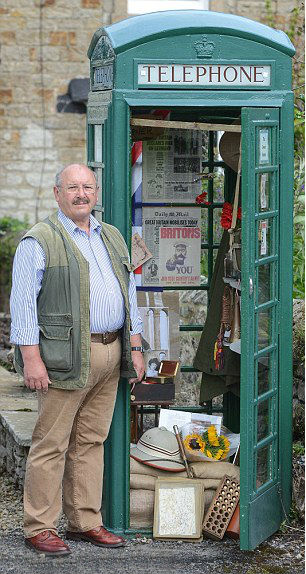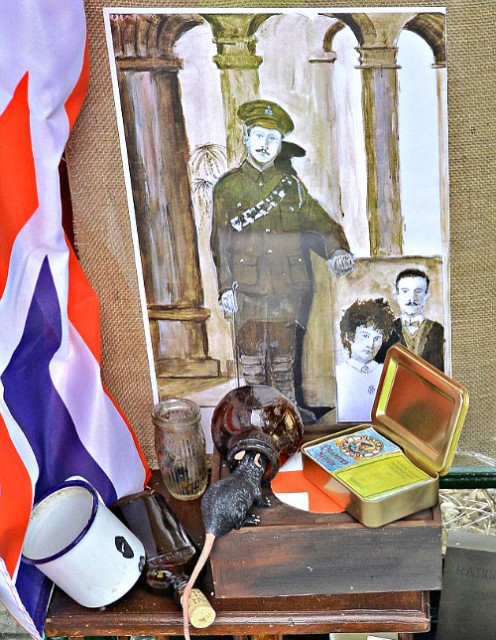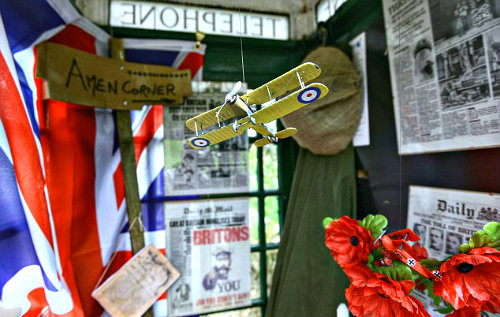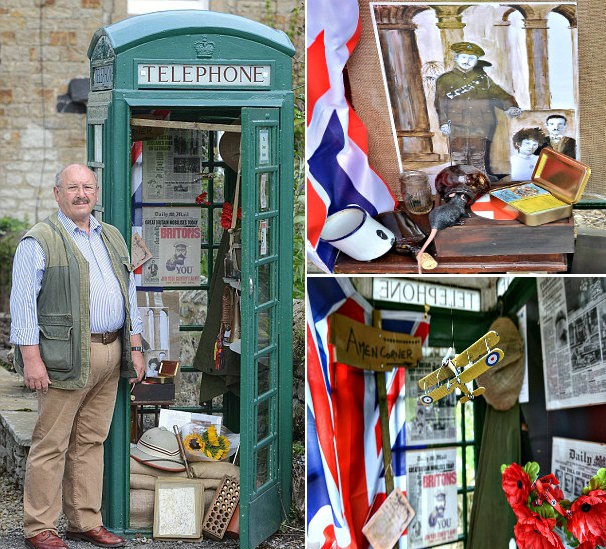An outdated, green-hued telephone box in County Durham renamed the Listening Post could be the smallest war museum throughout the world.
Way back in 2012, the Barningham Parish Council bought a green telephone box for a pound. Initially, the said phone booth was only furnished with a carpet and contained beer glass and many spiders when bought. Stumped with what to do with it, the council handed the task over to one of its members, John Hay, who was a new retiree during that time.
In Mr. Hay’s hands, the oldish phone booth was renamed the Listening Post and became a village interest. Eventually, he converted it into an art gallery. Every three months for the past two years, he changed the art pieces on display in the Listening Post. For Christmas, he placed a tree inside along with other season trappings. The people who passed by the booth can open it up and see the display. Such was its transformation.

However, when John finished a painting he was doing of his grandfather, who was a WWI soldier, in his uniform, the Listening Post took on a different route. In line with what his wife, Sheila, suggested, John converted the phone booth into a miniature WWI museum. As it is only telephone box-sized, it could most likely be the smallest war museum throughout the globe.
For its conversion, John used a lot of war memorabilia — some newspapers and other collectibles dating back to 1914. Included in the war items found in the Listening Post are front pages of newspapers dating June to December the year of the Great War’s outbreak, poppies – the flowers considered to be the flowers for remembering WWI – made of plastic as well as miniature WWI planes and the brass tin which Princess Mary gave to soldiers in 1914 as Christmas presents.

In addition to these pieces, the Listening Post also has a WWI tin helmet, several maps of the early battles of the Great War, sandbags, toy rats and even tins of bully beef. There are even WWI posters pasted on the walls of the Listening Post.
John, who had lived in Barnington with his wife for 27 years, recounted how when he hung the portrait of his grandpa in his WWI uniform inside the Listening Post, his wife suggested the idea of going WWI all the way. And that he did!
Before the mini-museum was put up, Sheila went on to gather as much information as she could about the Great War. Then, the couple built up the exhibit from the gathered facts. Now, the materials she got hold of are included in the Listening Post. With that is a list of the WWI soldiers from Barnington. For though the village is small, 15 men from it served and died in the Great War.

When asked what his motive is for putting up the miniature Great War museum, John pointed out that he just wants to let people know about the great sacrifice everyone had to do during the war. Furthermore, he believes that beyond the appreciation the people who get to see the Listening Post has given him, the display inside makes them think of those very arduous times one hundred years ago.
